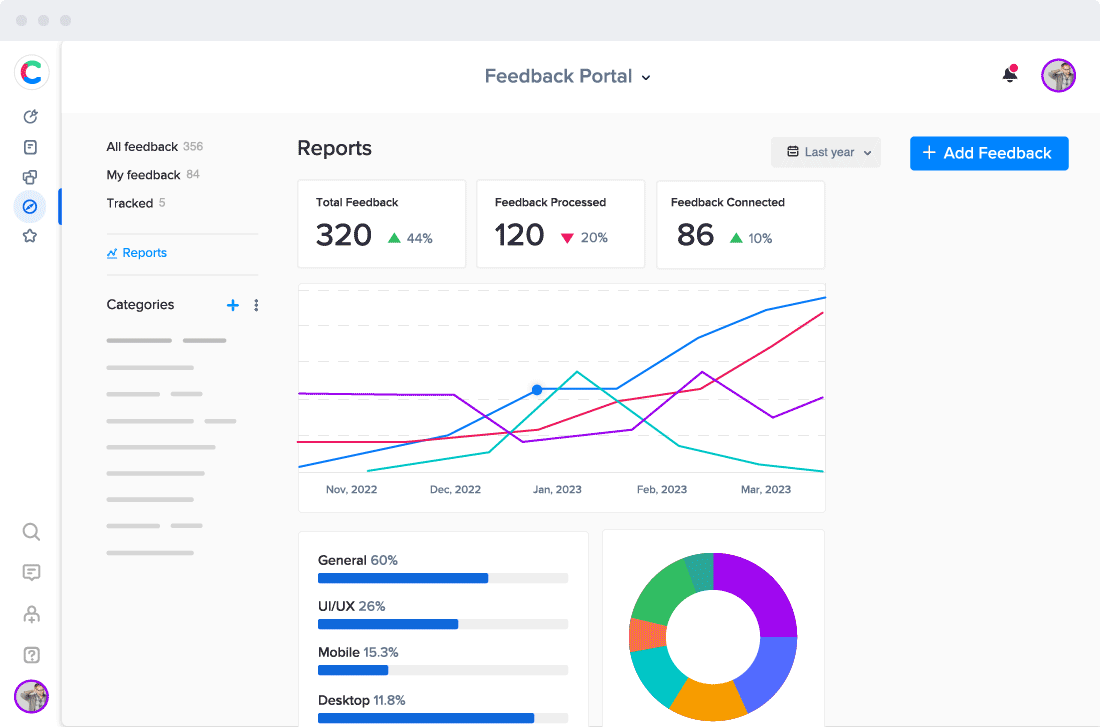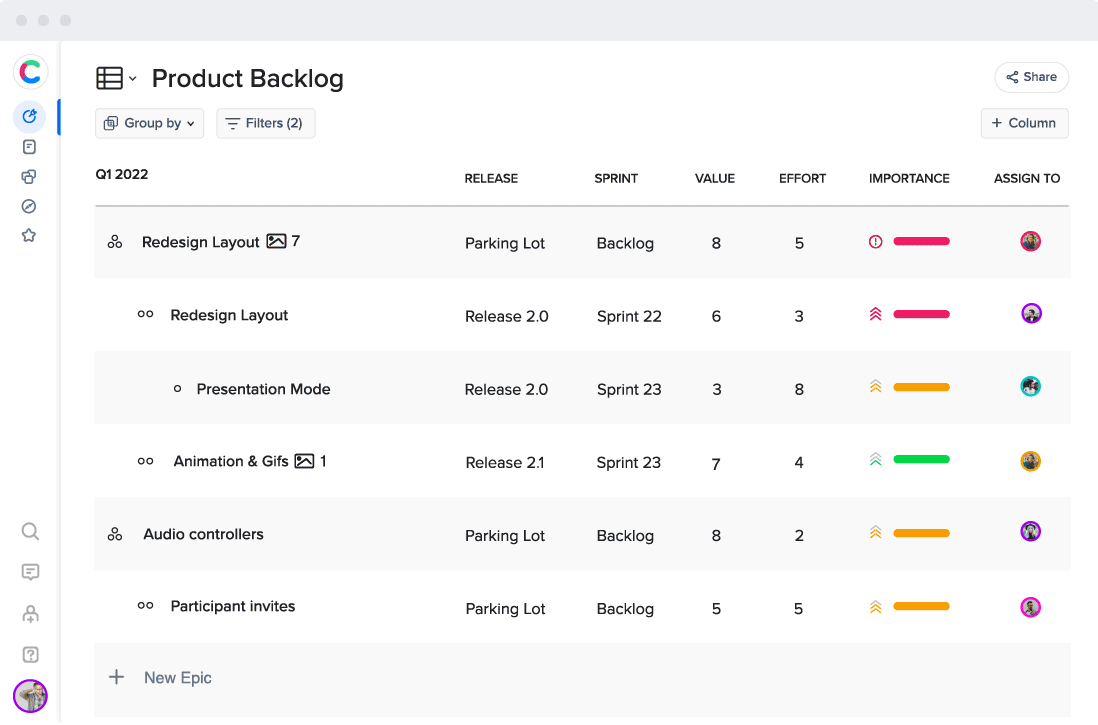Home > Blog > Don’t Skip the Product Discovery Process… or Your Product Will Probably Suck
Don’t Skip the Product Discovery Process… or Your Product Will Probably Suck

Why Product Discovery Is So $#&@^* Important
Steve Jobs famously said: “Some people say, ‘Give the customers what they want.’ But that’s not my approach. Our job is to figure out what they’re going to want before they do.”
Jobs wasn’t suggesting that Product Managers should ignore their customers. He was pointing out that people often can’t articulate what they want if it hasn’t been shown to them. And he was proven correct repeatedly. For example, there was no grassroots consumer movement demanding “1,000 songs in our pocket.” Apple delivered the iPod to the market without being asked – and it became one of the bestselling consumer electronics products in history.
(By the way, if you’d like more insightful quotes from Product Leaders like Steve Jobs, check out our eBook: Product Wisdom.)
What Is Product Discovery?
One of the most effective ways to find out what your customers want before they do is through a process called product discovery. That term simply means learning about your users’ needs, frustrations, and problems, and then conceiving and validating potential solutions to help them address those challenges.
According to product management expert Andrea Milan, product discovery is more of a mindset than a rigid, step-by-step process. Doing it successfully, Milan argues, comes down to answering three key questions:
- What is the biggest problem or pain point of our users?
- Will these people choose and figure out how to use a possible solution?
- Can we build this solution in a way that works for our business?
Considering the strategic importance of those questions, it should be clear that skipping the discovery stage can easily lead to a product that fails to resonate with its target user persona – or worse, has no viable user persona at all.
8 Tips to Make Product Discovery Easier and More Effective
With that in mind, here are some best practices to help your team leverage product discovery to identify solutions that will lead to market successes.
1. Talk to your customers.
This tip probably sounds obvious. But you’d be surprised at how many product teams dream up ideas by communicating and brainstorming only among themselves – and then begin making plans and creating roadmaps without ever validating their ideas with potential users.
Let’s look again at Andrea Milan’s first product discovery question: What’s our user’s biggest pain point? The best way to learn that information – which will be key to helping you identify the most worthwhile solutions to build – is by talking with your target users.
2. Ask users to tell you stories.
One common mistake Product Managers make when interviewing customers and prospects is by asking them directly, “What new solution would you like?” Or: “What features would be most valuable to you?” Or: “If we built XYZ product, would it interest you?”
As Steve Jobs’s quote above illustrates, your prospective customers often can’t tell you exactly what they need. You need to figure that out for them. And that’s why you want to ask open-ended questions – like asking them to tell you stories about their day, their job workflows, or their challenges.
Here are a few examples of how to frame these questions to draw out the most useful information from your potential customers:
- Tell me about the most frustrating aspect of your job?
- What was the biggest challenge you had completing a task recently, and how did you overcome that challenge?
- Can you describe your most inefficient daily workflow or responsibility, and explain how technology helps (or lets you down)?
Those types of questions encourage detailed stories from your interviewees – and it’s in those stories that you’re likely to uncover an idea for solving a major problem for your user persona.
3. Validate ideas with users before moving forward.
Another common pitfall for product teams is viewing product discovery only as an interview and information-gathering activity. These teams might ask customers the correct questions, like the ones above (which is great), and then use what they’ve learned to conceive a possible solution (also great). But after convincing themselves they’ve identified a winning product idea, the team might simply start building.
With effective product discovery, you’re not done after you’ve talked to your customers the first time – far from it. You need to return to those users (and/or find others to speak with) and present your proposed solutions, so they can tell you whether they would be interested in trying or buying the product you have in mind.
4. Involve key stakeholders across the company.
As valuable a source of information as your user or buyer persona is in helping you discover your next winning product, your internal stakeholders – such as sales reps and customer support agents – are at least as valuable.
Your sales team knows firsthand why they lose deals. Prospects tell them. And your support agents field calls, chats, and other customer communications every day with questions, complaints, requests, and complaints about your products. If you can learn those details from your
Pro tip: While we’re on the subject of compiling and analyzing stakeholder feedback for potential new product or feature ideas, it’s worth noting that a best practice is to centralize this data and make it as easy as possible for your stakeholders to provide it.
One great way to do this is with the dynamic feedback portal in the craft.io product management platform.

To see it in action, book your personal craft.io demo
5. Weigh users’ actions more heavily than their words.
Talking with customers or prospects is a valuable source of insights and learnings. But watching how they behave can be even more valuable. So let your users tell you their stories, and listen carefully, but check what those people are telling you against how they’re actually engaging with your products.
Just as people often can’t articulate what they want or need until they see it, they also have difficulty explaining how they would use your product or what functionality they would find most important to them. So, you’ll want to pay close attention to how they act – and use those learnings to verify if they’re articulating their actual needs and challenges accurately.
6. Challenge every assumption.
If you find that any aspect of your product planning rests on an assumption, you’ll want to test that assumption.
For example, let’s say you find people on your team saying things such as, “Of course we should go to market with just this one feature,” Or, “Customers will probably respond best to three pricing options.” You don’t want to take for granted any detail during your product planning. Instead, you want to stop and ask yourselves why you’ve made that assumption and how you can validate (or disprove) it.
And this goes for assumptions from any of your stakeholders – your own product team, your executive decision-makers, your prospects, or your existing customers. Every assumption not backed up with data is a risk that could undermine the value of everything else you learn during your product discovery.
7. Focus only on the broad idea – not the details.
Another common trap that ensnares product teams during product discovery is thinking they need to solve the entire problem upfront, down to the smallest details of the proposed solution.
One of the biggest advantages of the movement toward agile product development is that product teams can release their solutions to the market in small increments and leverage user feedback to make frequent adjustments and improvements to their products.
And that’s a strong reason to limit your product discovery to identifying the big strategic picture of your users’ problems and a possible solution for it. If you’re using the agile method of frequent product releases, you can deliver some functionality to your users quickly, let them tell you how it works for them and what other functionality they’d pay to have added to the product, and then make those improvements.
Put simply: Use product discovery to identify a problem worth solving, then build and release an early version of that solution knowing your users will help you shape and enhance it over time.
8. Make product discovery continuous.
Product discovery is a lot like physical fitness: You’re never truly done. If you want to maintain a successful product for the long-term, you’ll need to make your discovery work an ongoing, continuous part of the product’s lifecycle.
Your customers’ needs and priorities will change. Your competitors’ moves will require your team to adjust and improve your own products. And new processes, trends, and technologies will affect how your users interact with your solutions. With those realities in mind, you’ll want to be regularly connecting with your user base to learn how they’re feeling about your products and what other challenges they’re facing that you could enhance your solutions – or build new ones – to help them solve.




